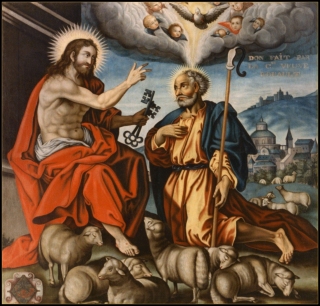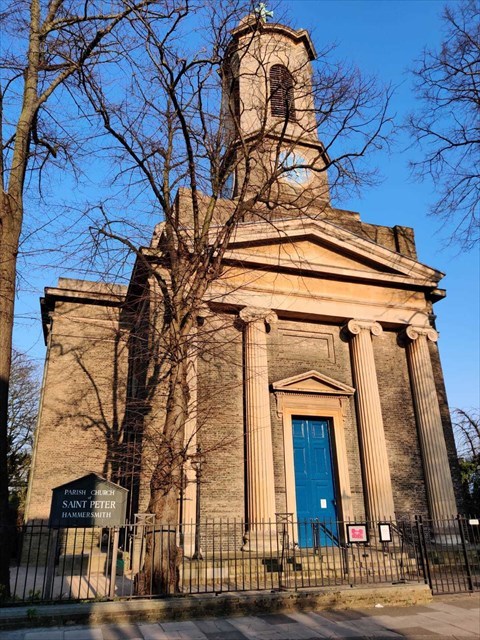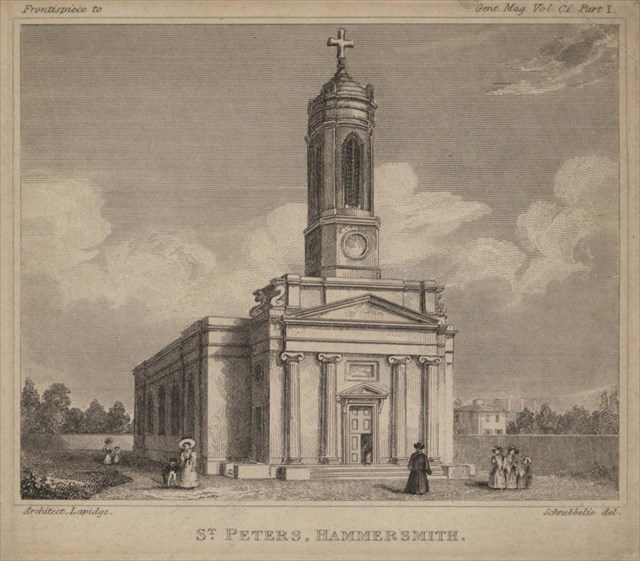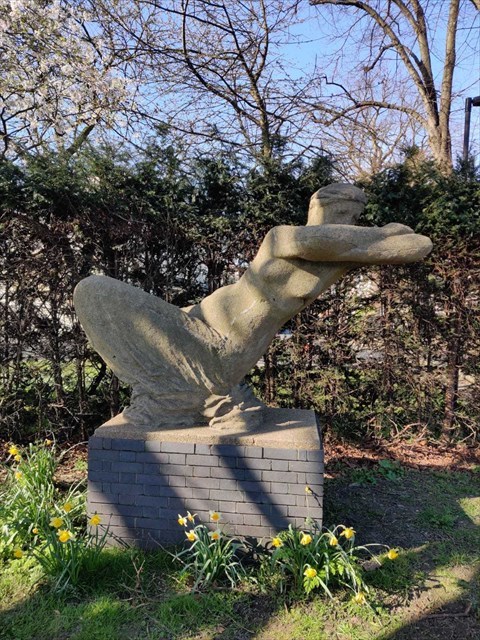The Cache
This disguised micro is hidden outside the church grounds; there is no need search any of the church walls or any areas inside them.
St. Peter

"And I say also unto thee, that thou art Peter, and upon this rock I will build my church; and the gates of hell shall not prevail against it." (Matthe 16:18)
St. Peter, also known as Simon Peter or Peter the Rock, was one of the Twelve Apostles of Jesus Christ, and the first leader of the early Church. According to Christian tradition, Peter was crucified in Rome under Emperor Nero and he is counted as the first Pope.
The Church

When the church was built in the village of Hammersmith in 1829, all that surrounded it was meadows, market gardens and smallholdings. The area steadily increased in size and prosperity due to the close proximity to the River Thames which was an important trading area.
The London Gazette of 8 November 1836 defined the boundaries of the St Peter’s District thus:
"It is bounded on the west by the Parish of Chiswick; on the south by the River Thames, the Creek and the High Bridge. Worple Way is towards the southern extremity of Waterloo Street; on the east northwardly Waterloo Street, including the west side of that street; then westward, by King’s Street, that is the Turnpike Road leading from London to Brentford, as far as Webb’s Lane, as far as Gould Hawke Road; and on the north by Gould Hawke Road until the said ancient road terminates in Chiswick parish at Stamford Brook."

The site of the church was donated by George Scott, born in 1780 to a wealthy family in Hammersmith. In 1807 he married Hannah Lucy Stoe, the daughter of another wealthy local family who brought as her marriage settlement the sum of £5,000, a large portion of land south of Ravenscourt Park and the land around Black Lion Lane (now St Peter's Square). By the 1820s Scott was deeply involved in the religious, social and business life of Hammersmith. He was a well-known and respected magistrate who provided generously to the causes of his poorer neighbours.
Although George Scott donated the site, substantial financial contributions were provided by Doctor Horsley who was the Bishop of London (£250) and the Revd William Wood the Rector and Vicar of Fulham, (£500).
The church is what is known as a Commissioners' church, as it received a grant from the Church Building Commission towards its cost. The full cost was £12,099 (equivalent to £1,070,000 in 2019), towards which the Commission paid £9,099. It is a Grade II* listed building. The first stone was laid on 16 May 1827, and the Church was consecrated on 15 October 1829.
The Leaning Woman

One of the most intriguing public sculptures in the capital – Hammersmith’s Leaning Woman – has been granted Grade ll listed status.
The gravity-defying 1959 sculpture by Karel Vogel, apparently of a classical Greek figure doing an extraordinary sideways limbo dance, was originally commissioned by London County Council’s patronage of the arts scheme, which had earmarked £20,000 a year to buy public works of art.
Sculpted in concrete – a trendy material of choice for post-war artists, she was sited in North Verbena Gardens near the foot tunnel under the A4 by St Peter’s church, to offset the dreariness of the Great West Road.
Motorists once joked that she was leaning to warn them to keep their speed down.
The Leaning Woman was installed on a leftover piece of land marooned by the road’s expansion in the early 1960s.
The sculpture, referred to by some locals as the Dancing Lady, is one of 41 pieces of post-war public art in England given protection on the recommendation of Roger Bowdler, Historic England’s director of listing.
"These sculptures have become a precious national collection of art which we can all share,” he explained. "They enrich our lives, bring art to everyone and deserve celebration."
It was one of the last works by Vogel, a Czech-born artist and art teacher, who lived from 1897 to 1961.
He fled the Nazis in 1938, coming to England and teaching sculpture at several schools and colleges. His work featured prominently at the 1951 Festival of Britain, and he also exhibited at the Royal Academy summer exhibition.
****************** ********************
For full information on how you can expand the Church Micro series by sadexploration please read the Place your own Church Micro page before you contact him at churchmicro.co.uk
See also the Church Micro Statistics and Home pages for further information about the series.
****************** *******************